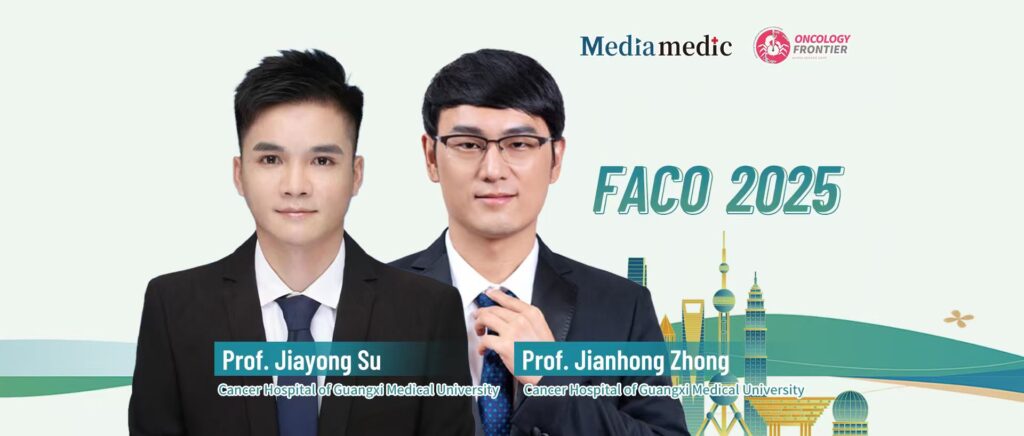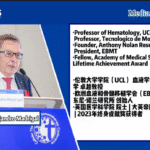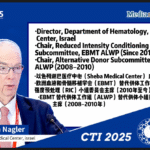
Editor's note: At the recently concluded 13th Federation of Asian Clinical Oncology (FACO 2025) Annual Meeting, Oncology Frontier, together with International Hepatology, interviewed Dr. Su Jiayong from the Affiliated Cancer Hospital of Guangxi Medical University. Drawing upon his research background in hepatocellular carcinoma (HCC), Dr. Su shared his takeaways from the conference and presented the latest findings from his team. He also offered insights on current research hotspots in oncology, implications for clinical practice, and the future of multi-center collaboration across Asia—stimulating deeper reflection on optimizing clinical strategies and strengthening regional cooperation. Q: Which presentations or discussions at this year’s FACO conference left the strongest impression on you? How might they influence your clinical practice?
Dr. Su Jiayong: Thank you for the question. This year’s FACO meeting was extremely rich in content, covering major disease areas such as breast cancer, gastrointestinal cancers, lung cancer, and hepatobiliary and pancreatic tumors. The conference brought together leading oncology experts from China, Japan, Korea, the United States, the United Kingdom, and other countries. I gained a great deal from the scientific sessions and international academic exchanges.
The presentations that impressed me most were focused on two topics:
- The role of tertiary lymphoid structures (TLS) in rectal cancer treated with neoadjuvant chemoradiotherapy, and
- A phase II clinical trial of D-TACE combined with camrelizumab and apatinib in intermediate and advanced HCC.
TLS has become a major research hotspot—whether in colorectal cancer or liver cancer. Our team has previously explored the impact of TLS on adjuvant immunotherapy after hepatectomy, and we published our preliminary findings in Hepatology. TLS is closely associated with immune response. Whether “TLS status” can serve as a predictive biomarker or therapeutic target for neoadjuvant/adjuvant treatment efficacy—and whether it can help guide individualized treatment—represents an exciting direction for further investigation.
The phase II study of D-TACE combined with immunotherapy and targeted therapy in HCC was also highly inspiring. For patients with unresectable HCC at initial diagnosis, the combination of locoregional therapy + systemic immunotherapy + anti-angiogenic therapy has now yielded positive phase III RCT results in EMERALD-1, LEAP-012, and TALENTACE, establishing the clinical value of triple therapy. Our own GUIDANCE001 study similarly found that intermediate–advanced HCC patients can derive substantial benefit from interventional therapy combined with immunotherapy and targeted therapy. However, the differences in therapeutic efficacy across various drug combinations still warrant clarification.
Overall, these studies begin with real clinical problems and focus on the core concepts of precision treatment and combination therapy, providing valuable guidance for clinical practice.
Q: What topic did you present at this year’s FACO meeting? Could you briefly summarize the main message?
Dr. Su Jiayong: At FACO 2025, I represented the Guangxi GUIDANCE collaborative group and presented our study titled: “Impact of Accumulated High-Risk Recurrence Factors on the Efficacy of Adjuvant PD-1 Inhibitors After Hepatectomy in HCC Patients.”
Postoperative recurrence remains a major challenge in HCC and is the primary limitation to long-term survival. The IMbrave050 study found that when a patient has only one high-risk factor, adjuvant therapy provides no significant benefit. But when two or more high-risk factors are present, adjuvant therapy shows a clear trend toward benefit. This prompted us to ask: Does stratification by the number of high-risk factors affect the efficacy of adjuvant PD-1 inhibitor therapy?
We analyzed data from 1,649 patients who underwent curative hepatectomy with at least one high-risk recurrence factor, prospectively collected from 14 hospitals across China between January 2019 and December 2024. Among them, 465 patients received adjuvant PD-1 inhibitors, while 1,184 underwent active surveillance only.
We further stratified patients according to the number of high-risk factors they carried. We found that postoperative adjuvant PD-1 inhibitors significantly improved prognosis overall. However, in the HRF-1 group—patients with only one high-risk factor (even those with microvascular invasion alone)—adjuvant therapy did not provide benefit (median RFS: 32.0 months vs. 35.0 months for surveillance).
In contrast, for patients with two or more high-risk factors—especially those with three or more—adjuvant therapy produced marked improvements in both RFS and OS.
This suggests that the more high-risk recurrence factors a patient has, the stronger the indication for adjuvant therapy. That said, the increased incidence of treatment-related adverse events must also be taken into account.
Q: You have previously participated in multinational collaborative studies led by experts across Asia. Based on your experience, what measures are needed to ensure smoother multicenter research?
Dr. Su Jiayong: Our team has been involved in similar international collaborative projects and has accumulated practical experience—particularly regarding two core issues: sample size and data quality control.
For sample size and data quality, on one hand, it is critical to include the broadest and most comprehensive clinical variables possible based on study objectives and statistical needs. This facilitates additional sub-studies and encourages each center to enroll all eligible cases to maximize sample size.
On the other hand, each center must strictly ensure the accuracy and completeness of baseline data for all enrolled patients. Every dataset must have real research value; we must avoid “filling numbers” with low-quality data.
For data quality control, a multi-tiered QC system is needed:
- Center-level QC: Each center handles daily data entry checks and routine case verification.
- Standardized follow-up system: Establish unified follow-up schedules and procedures. Use reminders, data tracing, and periodic audits to ensure follow-up timeliness and completeness.
- Central QC by the leading group: The principal investigators periodically review data from all centers and communicate promptly about any issues, ensuring reliability at every step.
Only when both the “quantity” and “quality” of the sample and full-cycle data QC are ensured can multicenter research proceed smoothly and produce reliable, clinically translatable findings.
We have now established the Guangxi GUIDANCE research database and are working to expand sample size according to these principles. We also hope more centers will join us in building a collaborative platform for shared progress and mutual benefit.
Prof. Zhong Jianhong
- Associate Professor, Affiliated Cancer Hospital of Guangxi Medical University
- Doctoral supervisor and postdoctoral co-supervisor
- Guangxi Bagui Young Scholar; Guangxi Youth Science and Technology Award recipient; Nanning High-Level Talent (Category B)
- Standing committee member / committee member in seven national academic associations, including the Endoscopy & Robotics Branch of the Chinese Anti-Cancer Association
- Associate Editor of Infect Agent Cancer; Youth Associate Editor of Hepatoma Research
- Editorial board member for J Clin Transl Hepatol, World Journal of Hepatology, iLIVER, Gene Expression, EJMO, and others
- First/last corresponding author of over 100 SCI publications in journals including Nat Rev Clin Oncol, JCO, J Hepatol, Gut, Hepatology, Liver Cancer, Ann Surg, Br J Surg, and JHEP Reports
- Eight papers selected as JCR Highly Cited, Highlights, Editor’s Choice, or accompanied by invited commentary
- Twenty-eight research findings incorporated into more than 30 domestic and international clinical guidelines for HCC and hepatitis B
- Over 7,500 Google Scholar citations
- Listed in “World’s Top 2% Scientists (2025)” and “Lifetime Scientific Impact Ranking”
- Recipient of the 2024 ESMO-Asia Travel Grant
- Five studies selected for oral presentation at APASL 2025 and ILCA
- Principal investigator of 2 national grants and 6 provincial/ministerial projects
Dr. Su Jiayong
- Affiliated Cancer Hospital of Guangxi Medical University
- Academic-track PhD candidate under the supervision of Assoc. Prof. Zhong Jianhong
- First/co-first author of 8 SCI papers in Hepatology, Liver Cancer, and others
- PI of one Guangxi Education Department graduate innovation project; participant in multiple NSFC and Guangxi major R&D grants
- Clinical research focus: optimization of adjuvant therapy strategies and patient selection after HCC surgery
- Basic research focus: mechanisms of HCC postoperative recurrence (TLS-related)
- Recipient of the APASL 2025 Best Oral Presentation Award
- Multiple studies presented orally at ILCA, APASL, and FACO


